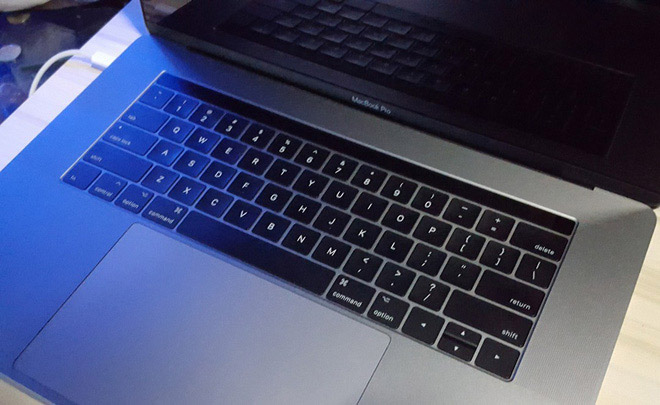Users forget to increase the brightness of the MacBook Pro screen, Apple thought the device was broken and spent more than $ 10,000 for warranty
In mid-2018, Greg Benz - a photographer and programmer who spent nearly 7000 USD to buy his latest MacBook Pro with Core i9 chip, 32GB RAM and 4TB SSD. After using it, Greg shared on his personal blog that he was very pleased with the performance of the device and felt that the money he had to spend on it was absolutely worth it.
However, after a few months of use, the hardware of the machine is constantly having problems, black screen (rotating fan but the machine does not start). Greg brought his MacBook Pro to Apple for warranty. And Apple replaced the motherboard inside Greg's MacBook Pro.

But after only a few months, the MacBook Pro continued to show symptoms as before. And this time, Apple replaced another motherboard for it.
But once again, Greg's MacBook Pro failed and Greg got Apple this time for a completely new device.
As a joke, Greg's MacBook Pro still suffers from a "warranty" even though it has a fourth warranty.
Greg felt extremely annoyed that it not only took time and it also caused him to lose data after each replacement of the component due to the security mechanism of the T2 chip.
Apple also suffered no small losses. With 2 times to replace motherboard, connecting cable and a new machine worth 7000 USD, the company has spent more than 10,000 USD to warranty Greg's MacBook Pro.
The cause of the problem surprised everyone
It was until the fifth warranty, when Greg discovered that the reason why his MacBook Pro failed after a period of use. Unexpectedly, it was a rational reason, the screen brightness was set to the lowest level, not related to the hardware. Specifically, Greg often reduces the brightness of the MacBook Pro to the maximum because he frequently connects the MacBook Pro to the removable screen and forgets to increase it.
In previous warranties, no Apple employee, even senior staff, discovered this. Only up to the fifth time of warranty, an Apple employee named Kyle did a new way no one had ever done before to light the flashlight on the screen, then discovered the dim image of the login screen.
Why is a simple problem so hard to detect?
It may sound silly, but it is the MacBook Pro's unreasonable way of doing things that has caused many misunderstandings and hindrances in the diagnostic process of Apple users and employees. Make a seemingly childish problem as Greg's case becomes difficult to resolve.

Greg pointed out how the MacBook Pro unreasonably works specifically as follows:
- After the machine starts up, the screen brightness (including the boot screen with the Apple logo and the login screen) remains the same as the previous level. Although using system recovery and test tools, the screen also lights up.
- When the machine is booting or on the login screen, the user has no way to increase the screen brightness because the brightness control button in the Touch Bar does not appear until the user logs in.
- Only when the user has successfully logged in, the external plug-in screen is displayed.
- The external keyboard, even Apple's keyboard, cannot adjust the screen brightness.
- On the login screen, the keyboard light is always off even if it was in the previous state.
- The new MacBook Pro with T2 chip has a firmware password set, so resetting PRAM to default value is not valid.
After this incident, Greg was frustrated by Apple's limited technical support, even as a manufacturer, but its employees could not discover the true cause of the problem.
You should read it
- Understand the connection and key presses on the Macbook
- How will the new MacBook get more upgrades?
- The 15-inch MacBook Pro uses a Haswell chip to show off
- Apple upgraded the MacBook, MacBook Pro, and MacBook Air software
- The new generation MacBook Pro was delayed until October
- [Infographic] Breakthrough designs in 12-inch Macbook
 This is a durable smartphone, falling from a height of 31km above the ground but only slightly damaged on the screen glass.
This is a durable smartphone, falling from a height of 31km above the ground but only slightly damaged on the screen glass. Riot Games, the author of the League of Legends, was formally investigated with many allegations relating to social norms
Riot Games, the author of the League of Legends, was formally investigated with many allegations relating to social norms Admire Galaxy S10 + limited edition Park Hang Seo, very strange colors, unique accessories that make football fans ecstatic
Admire Galaxy S10 + limited edition Park Hang Seo, very strange colors, unique accessories that make football fans ecstatic Google Maps tested the new feature, giving itself a warning if the driver drove around for more money
Google Maps tested the new feature, giving itself a warning if the driver drove around for more money Microsoft released Sysmon 10 with DNS query logging feature
Microsoft released Sysmon 10 with DNS query logging feature